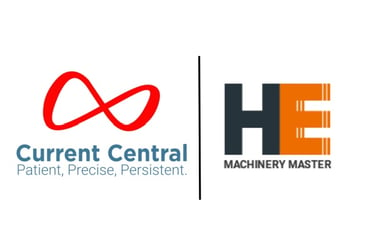Metal Stamping, Coil Feeding & Press Feeder: Comprehensive FAQ
What is metal stamping equipment used for?
It shapes metal sheets/coils into precise parts (e.g., auto brackets, electronic enclosures) through processes like punching, bending, or deep drawing. Suitable for mass production, it handles materials from thin steel sheets (0.1mm) to thick metal plates (up to 20mm) depending on the machine’s tonnage.
How does metal coil feeding equipment function?
It integrates three core steps: uncoiling (unfolding tightly wound coils), straightening (removing coil memory to flatten material), and feeding (delivering metal to stamping machines at a set speed). Advanced models use sensors to adjust tension, preventing material deformation or slippage.
Is a press feeder the same as coil feeding equipment?
No. A press feeder is a key component of coil feeding systems, specifically responsible for accurate material delivery to press machines (e.g., aligning metal for punching). Coil feeding equipment is a broader category that includes uncoilers, straighteners, and press feeders working in tandem.
What factors to consider when choosing these machines?
For stamping equipment: Tonnage (to match material thickness), die compatibility, and automation level (manual vs. CNC).
For coil feeders: Coil weight (to select uncoiler capacity), material width (to ensure straightener coverage), and feeding precision (±0.1mm for high-precision parts).
General: Energy efficiency and after-sales support for maintenance.
Can they work together?
Yes—they form a production line. Coil feeders supply continuous material to stamping equipment, while press feeders sync with the stamping cycle (e.g., feeding metal between punches). This integration cuts downtime by 30%+ compared to manual feeding.
How to maintain these machines?
Stamping equipment: Lubricate press guides monthly; inspect dies for wear quarterly.
Coil feeders: Clean straightener rollers weekly; check sensor alignment monthly to avoid misfeeds.
What types of metals are suitable for these machines?
Most common metals work, including carbon steel, stainless steel, aluminum, and copper. For high-strength alloys (e.g., titanium), ensure the stamping equipment has sufficient tonnage, and coil feeders have anti-wear rollers to avoid material damage.
What are common problems and solutions?
Stamping: Uneven parts may result from misaligned dies—adjust die positioning and check press parallelism.
Coil feeding: Material jams often come from loose coil tension—tighten the uncoiler’s brake slightly.
Are there safety tips for operation?
Stamping: Install light curtains to stop the press if hands enter the work area.
Coil feeding: Wear gloves when handling coils to prevent cuts; secure coils with chocks to avoid rolling.
How do automated and manual versions differ in performance?
Automated equipment (e.g., CNC stamping machines, servo-driven coil feeders) offers higher precision (±0.05mm) and speed (up to 300 strokes/min), ideal for large-scale production. Manual versions are cheaper but slower, suitable for small batches or simple parts.
What affects the cost of these machines?
Key factors include tonnage (higher tonnage stamping equipment costs more), automation level (servo systems add expense), and brand (reputable brands with better after-sales service have higher prices). Coil feeders with larger coil capacity also cost more.
What’s the typical service life of these machines?
With proper maintenance, stamping equipment can last 10–15 years, while coil feeding equipment (with replaceable rollers and sensors) can serve 8–12 years. Regular replacement of wear parts (e.g., die edges, feeder belts) extends service life.
Can they handle custom part production?


